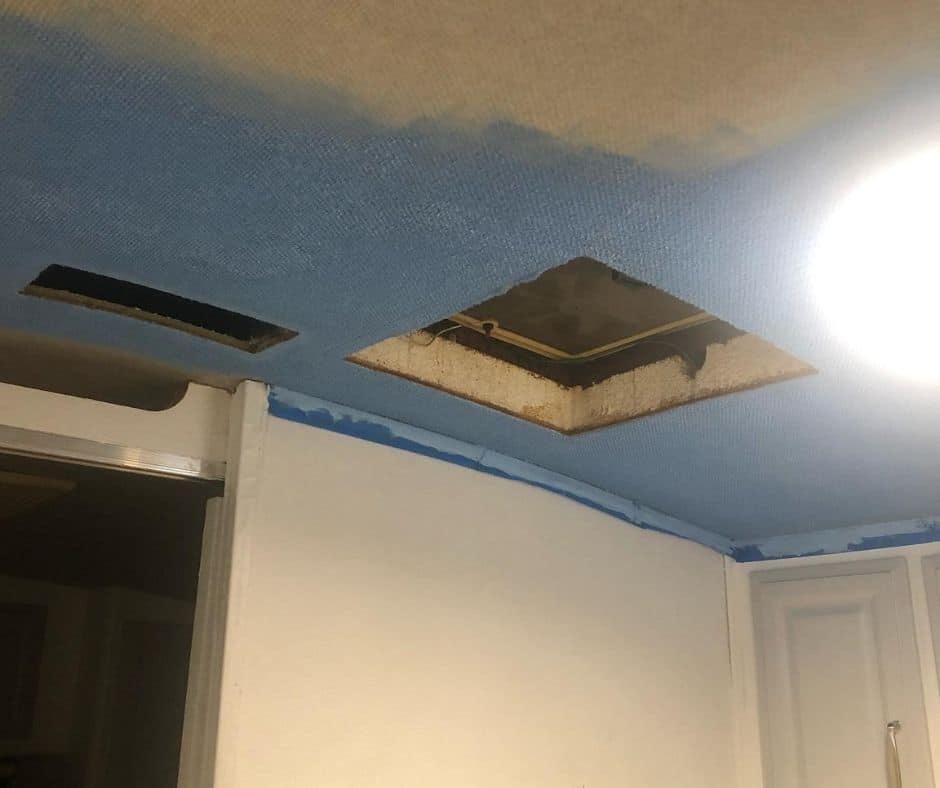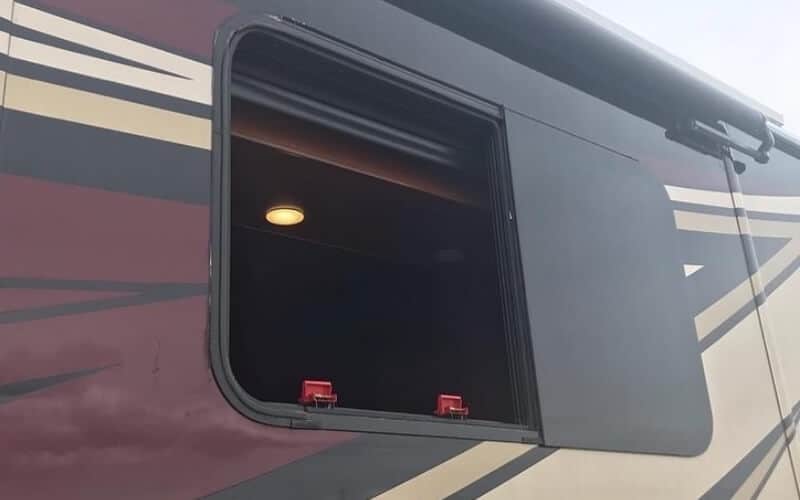Are you thinking about installing new ceiling panels in your RV? If so, choosing the best possible replacement material for your RV will go a long way towards ensuring it maximizes its value, while minimizing future problems.
Of course, adding or replacing ceiling panels isn’t just about making your RV stronger.
They also can do other things like adding insulation value, protecting or repairing water leaks and making the RVs interior more durable.
There is a log of different RV ceiling panels to choose from. Some enhance the interior aesthetics, add soundproofing, some add insulation, and some cover-up the lingering stains left behind by water leaks.
We tried to take all these things into account while compiling a list of the best RV ceiling panel materials to choose from.
5 Best Materials For RV Ceiling Panel Replacements
You will be happy to hear that there are several options to consider in replacing your RV’s ceiling.
Some are panels or ceiling tiles. Though it is also possible to simply use sheet materials to replace a larger section of the ceiling.
1. Wood Sheeting

Veneer manufacturing technology has helped reinvent plywood. Thin sheets of a quarter or perhaps half-inch plywood is skinned with veneered wood made from a tree that has a lot of character in the grain pattern.
It can then be sanded and stained to match your RV’s updated décor.
Tongue & Groove Wood Boards
Tongue & groove boards or planks are coming back into fashion for cabins and RV interiors.
They are relatively easy to install and can be stained to match your RV’s interior décor.
They also add a lot of character, and if one does get damaged, or you make an incorrect cut near a cabinet or a corner, you only have to replace one board, instead of an entire sheet of expensive plywood.
The Benefits Of A Wood Replacement Ceiling In An RV
There are a few benefits that might make plywood or tongue and groove lumber the ideal material for replacing your RVs ceiling.
The Drawbacks Of A Wood Replacement Ceiling In An RV
There are a few drawbacks to keep in mind before you decide to invest in plywood or tongue and groove wood for your RV’s replacement ceiling.
2. Vinyl or PVC Tiles

Vinyl and PVC have enjoyed a vigorous reinvention thanks to modern manufacturing technology.
It is now available in sheets as well as tiles. Best of all it tends to be waterproof, as well as easy to install.
Benefits of A Vinyl Or PVC Tile Replacement Ceiling In An RV
There are several benefits to using vinyl or PVC tiles to replace your RV’s interior ceiling.
Drawbacks Of Vinyl Or PVC Tile Replacement Ceiling In An RV
There are a few potential drawbacks to keep in mind before investing in replacing your RV’s ceiling with vinyl or PVC tiles.
3. Metal Tiles

Metal tiles have an antique quality to them that harkens back to the turn of the 20th century.
Many have ornate patterns and special-colored finishes to match your RV’s interior décor.
Most metal tiles are designed to overlap each other to hide the fasteners at the seams.
The Benefits of a Metal Tile For Replacing An RV Ceiling
There are several benefits to using metal tiles to replace the ceiling in your RV.
The Drawbacks of a Metal Tile For Replacing An RV Ceiling
Metal tiles aren’t perfect for every RV or every RV renovation budget. You should consider some of the potential drawbacks of using metal tiles in your RV ceiling renovation.
4. Fabric Ceiling Tiles

Fabric tiles have come a long way in recent years. They are lightweight, easy to install, and available in a staggering array of colors and patterns.
Many people who use fabric ceiling tiles in their RV use them as cover-ups for an existing ceiling after repairing an exterior water leak.
The Benefits of a Fabric Tile Replacement Ceiling In An RV
There are a few benefits to fabric tiles that might make them the ideal material for replacing or simply covering up your old RV ceiling.
The Drawbacks of a fabric Tile Replacement Ceiling In An RV
Fabric tiles might not be ideal for replacement ceiling panels in an RV. You should take into account some of the following drawbacks before investing in fabric ceiling panels.
How Do I Prevent Water Leaks In My RVs Ceiling?
Water leaks are the number one reason why people replace their RV ceilings.
Covering the exterior of your RV’s roof with a skin of Rubber EPDM or Rubber TPO will prevent future water leaks from affecting your replacement ceiling.
Can I Use Drop Tiles To Replace My RV’s Ceiling?
The drop tiles that you see being used in a lot of modern offices and suites don’t really take well to RVs.
Their loose fit makes it easy for them to fall down. They also rob you of 12 or more inches of vertical space to account for all the hardware and components needed to hang the track.
This is precious space, that brings the RV’s ceiling down too low for most people’s liking.
Will A Replacement Ceiling Affect The Weight Of My RV?
Wood is the only material on this list of RV ceiling materials that could affect the payload or GVWR of your RV in the real world.
Tongue and groove lumber can add as much as 450-pounds to cover a 250 square foot area.
At the same time, a 4’ X 8’ sheet of half-inch-thick plywood with a veneer layer weighs around 60 to 65-pounds.
Conclusion
There as several important factors to consider when choosing the best RV ceiling panel replacement materials.
This includes things like weight, ease of installation, and durability. Not to mention costs, and how they can affect the interior aesthetics of your RV.
If you want a rustic feel, and your RV has a lot of available payload capacity or GVWR, then you might lean toward veneered plywood or tongue & groove lumber as the best material for replacing your RV’s ceiling.
If you are looking for a vintage look, and you also prioritize lightweight, then a metal tile replacement ceiling might be the best option for your RV. It is ornate and available in a wide range of colors and finishes.






